Aug 26, 2020
Alcohol Use Disorder: Addressing Stigma and Treatment Access in Rural America
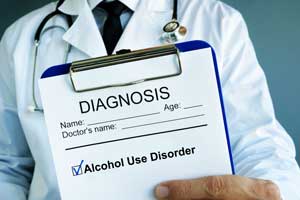 Alcohol consumption and its
stigma: stigma if you do, stigma if you don't. Along with
stigma due to periodic or chronic misuse, stigma is
encountered again when the misuser seeks treatment in
order to regain well-being. Some of those trying to gain
recovery will experience stigma over and over again when
there is success followed by failure or no success
despite multiple attempts.
Alcohol consumption and its
stigma: stigma if you do, stigma if you don't. Along with
stigma due to periodic or chronic misuse, stigma is
encountered again when the misuser seeks treatment in
order to regain well-being. Some of those trying to gain
recovery will experience stigma over and over again when
there is success followed by failure or no success
despite multiple attempts.
Experts point out that the public receives mixed health messages about alcoholic beverages. For more than a decade, cardiologist Dr. James O'Keefe has tracked the science behind alcohol's health benefits and detrimental effects. Read more in The Alcoholic Beverage: An Elixir, Yet a Poison?
Jackie Costley-Reviel started her healthcare career as a registered nurse and now is CEO of Allen Parish Community Healthcare (APCH), a rural hospital in Kinder, Louisiana. She reviewed several local issues associated with the misuse and stigma of alcohol.
"Alcohol is the tough one because alcohol is readily available," she said. "We're a very social culture. Alcohol is everywhere. Mardi Gras is a month-long event. The availability of alcohol and the culture around it is important to acknowledge."
She also discussed how healthcare professionals might themselves stigmatize patients who present again and again for treatment. She provided the reminder that substance abuse is a chronic condition — like congestive heart failure or diabetes that are chronic medical problems that have little to no stigma, but require care over and over again when the conditions worsens.
"Alcohol is legal," she said. "That makes it easy for patients to relapse, so we need to accept them back into the program time and time again for as long as they need help, just like we care for heart failure patients and diabetics in ketoacidosis."
Defining AUD
As Costley-Reviel indicated, alcohol use disorder (AUD) is considered a chronic medical condition. Described by the National Institute on Alcohol Abuse and Alcoholism as a chronic relapsing brain disorder, it is "characterized by an impaired ability to stop or control alcohol use despite adverse social, occupational, or health consequences."
The American Psychiatric Association (APA) describes substance misuse disorders as all having a common pathway: a similar impact on the brain. These conditions are "manifested by compulsive substance use despite harmful consequence" and that individuals "keep using alcohol or a drug even when they know it will cause problems." The misuser's brain creates an unshakeable intense focus on using a particular substance, such as alcohol, to the point that it takes over their life. According to the organization, there is also direct physical evidence of substance use disorders' impact on the brain: imaging studies show visible changes in the brain areas "associated with judgment, decision-making, learning, memory and behavior control."
The APA's Diagnostic and Statistical Manual of Mental Disorders (DSM-5) provides standards for diagnosis of substance use disorders (SUD) where "each specific substance (other than caffeine, which cannot be diagnosed as a substance use disorder) is addressed as a separate use disorder (e.g., alcohol use disorder, stimulant use disorder, etc.), but nearly all substances are diagnosed based on the same overarching criteria." Examples of criteria include repeated attempts to quit or control use and physical or psychological problems related to use.
Stigma and Treatment for AUD
Though opioid use disorder (OUD) commands much attention in rural America, experts pointed out that AUD disorder is also a significant problem. According to a 2012 federal agency report [no longer available online], in rural America nearly 50% of treatment admissions for substance use disorder (SUD) treatment were actually for AUD. Anecdotal reports from experts currently involved with implementing rural innovations for SUDs note that AUD is still around 50% of those presenting for SUD treatment. These same experts said they wonder just how that number would change if stigma associated with treatment would decrease.
Donald McDonald, a person thriving in recovery, is a social worker with JBS International, providing national technical assistance for rural community opioid response grantees. He also self-describes as having a passion for "specifically addressing stigma and eliminating discrimination for all people dealing with SUD." He made it clear that stigma exists for all SUDs — AUD, OUD, as well as other misuse disorders — and that stigma is a barrier to treatment for each. Despite this, he said that an imparity exists that is driven by patient profiling.
"Our classic view of quote 'the alcoholic' is one that brings some degree of compassion and an equal measure of hope that recovery is possible," McDonald said. "This is also true for the person experiencing legitimate pain who is quote 'legally prescribed' opioids but becomes unwittingly addicted. The 'opioid victim' narrative is based in the reality of a minority of people experiencing OUD, yet compassionate responses are often confined to that type of story."
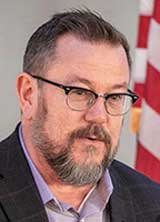
McDonald further pointed out how this sliding scale of stigma, which ranges from compassion for one profile and disapproval for a profile that involves misusing an illegal substance, has a negative impact.
"My recommendation is when we're working with people experiencing substance use disorders, this business of legal versus illegal or oral versus IV or alcohol versus drugs is an unhelpful construct," he said. "It's irrelevant when it comes to accessing the levels of appropriate and compassionate care that everyone with any type of substance misuse deserves."
Because substance misuse of all types has more similarities than differences, experts pointed out that the common pathways associated with SUDs — brain chemistry, genetics, and psychosocial dynamics — might allow for a common infrastructure: For organizations innovating in rural treatment and recovery, funding that targets opioid misuse could have additional reach for other SUDs. McDonald said most of the federal grants he's aware of have flexible language. As a result, he said he sees that the increased funding for OUD in rural areas has the potential to result in many positives for all SUDs if strategic plans are mindfully constructed.
"As one of a number of advocates at the planning table, we've tried to make sure that everyone experiencing substance use disorders benefits from the rise of resources and the lowering of stigma, especially since mortality isn't the only negative outcome of these SUDs that are crippling and painful to rural communities."
Anti-Stigma Tools
Working in collaboration with other partners, the Central East Addiction Technology Transfer Center created an in-depth toolkit to reduce stigma surrounding substance misuse. Additionally, the National Institute on Drug Abuse offers a language use guide, pointing out that "although some language that may be considered stigmatizing is commonly used within social communities of people who struggle with substance use disorders (SUDs), clinicians can show leadership in how language can destigmatize the disease of addiction."
More On Substance Misuse: Stigma, Knowledge Gaps, and Patience
Psychiatrist Dr. Margaret Jarvis cares for both urban and rural patients in northeast Pennsylvania and is on the American Society of Addiction Medicine (ASAM) board of directors. She shared concerns similar to McDonald's regarding stigma and bias.
"Many people who have substance use disorders themselves have a bias, a bigotry against those who misuse other substances," Jarvis said. "They will tell you that that type of substance use seems worse. To quote them, they see that misuse as more of a disturbance in those misusers' lives and it violates more social mores than alcohol misuse does. In treatment programs, people who use alcohol alone or alcohol with nicotine often react to people who use other substances as though there's something bad or wrong with them. The culture around alcohol misuse is that somehow it's not a problem compared to those who are using heroin or seen as 'using a needle.'"
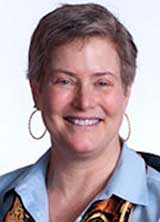
Jarvis said that clinicians may also have conscious or unconscious biases toward their patients with alcohol and other substance misuse. In addition, she believes that the increased funding dedicated to opioid and substance misuse will lead to earlier and more in-depth training about substance misuse and the brain disorder they cause.
"We've learned that most physicians feel grossly unprepared to address alcohol and other substance misuse," Jarvis said. "Even those who are sympathetic and coming to that patient without stigma and bias feel like they don't have the words to ask the right questions or to begin to have a conversation about what might be wrong. That's one place where some of the opiate money may prove to be a boon because once you've learned something in medical school about addressing opioid use disorder with a patient, those same learnings can be applied to alcohol misuse without too much trouble."
ASAM AUD Education Offerings
ASAM provides education offerings that include its Fundamentals of Addiction Medicine ECHO (FAME) sessions. Specifically addressing alcohol is The Whos and Whats of Alcohol Use Disorder: Definition, Epidemiology, Diagnosis, and Withdrawal.
The Benefits of Repetition and Patience
Though clinicians might be reluctant to approach their patients about their alcohol use, Jarvis said there are instances when clinicians are likely to question or make assumptions about a patient's alcohol use: for example, when blood work results suggest misuse, like elevated liver function tests. She said that even those conversations, though perhaps not in-depth, are still likely to help alcohol misusers to question their use and perhaps consider treatment.
"There are probably many times that a patient sits in the waiting room hoping that the doctor doesn't catch on to their alcohol use," Jarvis said. "They usually don't volunteer any information about it. But if somebody walks into the office smelling of last night's whiskey or is obviously impaired or has findings like abnormal labs, many, many doctors are going to act.
There's a piece about being patient with them — often in line with trying to get somebody to change their diet, take their medications, to walk — that has to do with humans committing to a change in behavior.
"Additionally, many physicians feel like they've told their patient a squillion times 'You know, your liver enzymes are elevated and that's probably due to your alcohol use. You should cut back.' We may feel like we say it and nothing ever happens. Yet there is a real simple thing: every time you say it, there's a ripple effect. Say it enough and sometimes the patient eventually thinks, 'Oh yeah, you know, my doctor's been telling me I should cut back.' Maybe the patient tries to cut back and finds that it's harder than they thought. Maybe in a year or two, they come back to you and ask for help. There's a piece about being patient with them — often in line with trying to get somebody to change their diet, take their medications, to walk — that has to do with humans committing to a change in behavior. But sometimes it helps a patient reach recovery."
Alcohol Use Screening
With regard to alcohol use screening, Jarvis said she is respectful of the innumerable mandatory questions primary care clinicians are currently charged with asking. To quickly screen for alcohol misuse, some experts have suggested the National Institute on Drug Abuse Quick Screen, a 1-question option for screening: How many times in the past year have you had four or more drinks in a day?
Impact of COVID-19 on AUD and Treatment
Jarvis shared that COVID-19 has influenced both alcohol consumption and AUD treatment in multiple ways. First, ASAM raised policymaker awareness by providing education that sudden alcohol abstinence due to closure of businesses selling those beverages could result in patients with physical dependency presenting to already-at-capacity emergency rooms experiencing acute withdrawal that can be life-threatening.
Second, Jarvis said there are anecdotal accounts of increasing numbers of people presenting for AUD treatments.
"We are now seeing people present for treatment who in the last several months have consumed more alcohol than they normally would have, because they're not working or don't have things to occupy their days," Jarvis said. "So many people feel bad, feel under attack. Many can still get to sources of alcohol rather readily."
Jarvis also pointed out a third potential COVID-related outcome linked specifically to improved treatment approaches.
"In 18 to 24 months, we might look back at the time we're living in right now and realize that we've learned so much about treating substance use disorders," Jarvis said. "The COVID crisis has challenged us and made us change what we're doing. Eventually we'll have better data around some of the approaches we've previously accepted as the right thing to do, like following urine drug screens at certain intervals in order to monitor treatment. COVID has prevented this type of testing and we'll be able to see how that has impacted treatment."
Jarvis indicated that COVID-19 telehealth changes are also emerging as a positive influence on the future of AUD treatment access — especially in rural America where just the simple recognition of motor vehicle ownership can eliminate anonymity and create stigma, which can be a barrier to getting treatment at a local brick-and-mortar treatment facility.
"We'll be sitting with a patient, trying to talk them into going to counseling and they're like, 'Ah, no, I can't do that,' because we learn they're from a rural area," Jarvis said. "What has happened with COVID is the fact that so many organizations that provide treatment for these diseases have moved to using virtual connections. There's virtual Alcoholics Anonymous meetings. The counseling group over and down the street is now doing virtual meetings. And there's a good chance that in the future this will all be on a cellphone."
Three States, Three Rural Approaches: Attending to Alcohol and Substance Use Disorders
Serving their rural communities as leaders who influence stigma and increase access to treatment, rural clinical teams in Louisiana, Texas, and New Mexico exemplify the messages shared by Jarvis and McDonald.
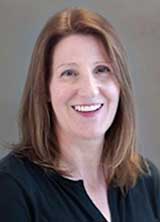
When Costley-Reviel became CEO of APCH, the organization's inpatient behavioral health unit was at around 25% capacity: 5 or 6 patients in a 24-bed facility, part of a system with a 49-bed rural hospital and a Rural Health Clinic in Kinder, Louisiana.
"I recognized that our community had a greater need for these services than was reflected by that census, so I knew we needed to change something," Reviel said.
Over the next few years, an inpatient medical management program for impending or active substance use withdrawal was added to the hospital's inpatient medical services. At discharge, the program was paired with a coordinated approach to transitioning patients to inpatient behavioral health or outpatient counseling. The program's reputation has attracted clients from throughout the state — including urban areas. She said she believes this is largely due to the organization's reputation of quality, compassionate, and anonymous care. APCH's clinical staff receives specialized training that addresses the stigma associated with these disorders and reviews the science that demonstrates substance use disorders are brain disorders. With this knowledge, Reviel said the staff does a tremendous job of caring for these patients.
It's a disease that flips that chemical switch in your brain and your brain says, 'I need it.'
"We can't say that alcoholism is a choice," Reviel said. "It's a disease that flips that chemical switch in your brain and your brain says, 'I need it.' It's similar for opioids or methamphetamine. These disorders themselves change the brain. It takes a long time to get that back."
In Texas…
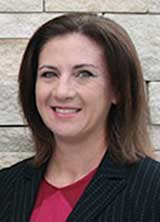
Yoakum Community Hospital (YCH) is a Critical Access Hospital (CAH) in Yoakum, Texas. Jennifer Franklin, YCH Chief Clinical Officer, said in her community, where Czech/German roots influence alcohol consumption, community needs assessments indicate that alcohol and other substance misuse might be less common than that seen in other rural areas. Though they have no specialists able to provide alcohol misuse treatment, she knows that their facility still needs to be prepared when alcohol and other substance misuse-related problems surface in the hospital or their local clinics.
Because their community had experienced an earlier suicide cluster of older men, the organization worked for several years to create a program that provides the community with 24/7 care provided by psychiatry consultation and licensed social work counselors. Central to this program is behavioral health training for hospital staff. Franklin pointed out that this training supports robust hospital admission screening processes that will often uncover important behavioral health issues, including substance misuse. With respect to alcohol misuse issues, she said the YCH staff are comfortable with medical stabilization and the conversations around encouraging patients to get more assistance at discharge.
"Because of our size, we can't host a counseling group and a substance abuse group," Franklin said. "We don't have a therapist who treats substance misuse directly here. Instead, we try to get the patient to the right place, working with the providers here and with the urban referral source to make that happen."
She mentioned how important it is that the staff feels comfortable not just in assessing for alcohol misuse, but in talking with patients when misuse is revealed. In the hospital setting, this is often either the primary cause for admission, or uncovered during an admission for another medical problem. She also pointed out that an important step when alcohol misuse is identified is initiating their standardized treatment algorithm that prevents life-threatening withdrawal that can result from acute abstinence during hospitalization.
Standardized Alcohol Withdrawal Protocols
Experts pointed out there is no facility too small to have an alcohol withdrawal protocol for use in the care of the hospitalized patient who misuses alcohol.
"Even though we're a medical hospital, a patient with
substance misuse is still our patient," Franklin said.
"We still have to take responsibility for behavioral
issues. Our doctors and nurses all educate the patients
about the choice to get treatment. Our clinical staff has
become much more comfortable with this conversation. Most
of our patients agree to explore treatment because
they've got a group of people around them that they trust
saying, 'You need to do this.'"
Most of our patients agree to explore treatment because they've got a group of people around them that they trust saying, 'You need to do this.'
Franklin acknowledged that finding an accepting facility for alcohol misuse treatment can be a real struggle in rural areas — as well as urban — and is grateful that is not the case for YCH. She said they work with 3 facilities in 2 different urban areas and can't remember being unable to transfer a patient. Though patients they care for who require this specialty assistance are transferred, she talked about how important it is to decrease stigma even around the presence of local behavioral services that they do have.
"If a statement is made that raises some stigma around the counseling program, there are usually enough people present who remember the challenges of patient care prior to the program," Franklin said. "They'll speak up and say, 'No, you're wrong. We need them here. They do good work for our patients. It's part of what we do.'"
In New Mexico…
William Camarota is a certified peer support worker (CPS), New Mexico's equivalent to a peer support specialist (PSS). Certified in 2017 — and with recent certification as a CPS trainer — he works at the Rehoboth McKinley Christian Health Care Services Alcohol and Substance Abuse Treatment Program in Gallup, New Mexico. Representing someone thriving in recovery, he said he sees how much value a CPS can make in any treatment program.
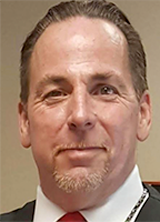
"Every individual's recovery is different," he said. "There's not just one standard motto or treatment approach that can be used. What a CPS illustrates and emulates is that recovery is possible. When we stand in front of somebody and we've told them our story, we are standing there as a visual representation that recovery can be achieved."
In addition to his work at the treatment center, he also has a nonprofit outreach effort focused on his rural area's local homeless population with substance use struggles who've not yet made the decision to enter treatment. Similar to comments made by Allen Parish's CEO Reviel, Camarota said that at a certain point in substance misuse, the ability to make a choice to stop no longer exists. He described these individuals with alcohol misuse as "the walking suicides."
"These people are not shopping for flavor or quality," he said. "They are looking at percentages. They drink hairspray in water, which is 25% alcohol, and hand sanitizer, which is 70% alcohol. They're just killing themselves but doing it slowly. People develop medical problems due to their alcohol use that are bad enough to get them admitted to a hospital. Their withdrawal symptoms are treated while their medical problem is treated, but when they're ready for discharge, the choice for further substance misuse treatment must be voluntary. But we know that because dependency is a brain disorder, we understand that there comes a point when the brain no longer can make that voluntary choice. They are harming themselves and can't choose not to. I'd like to see some new changes in criteria for mandatory treatment for those that have just totally lost that ability to make a choice."
Additional Resources
Centers for Disease Control and Prevention
National Institute on Alcohol Abuse and Alcoholism

